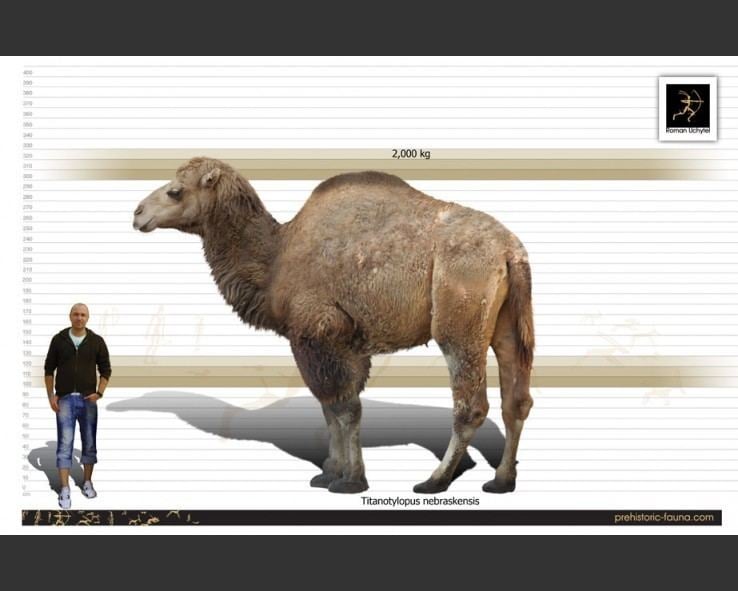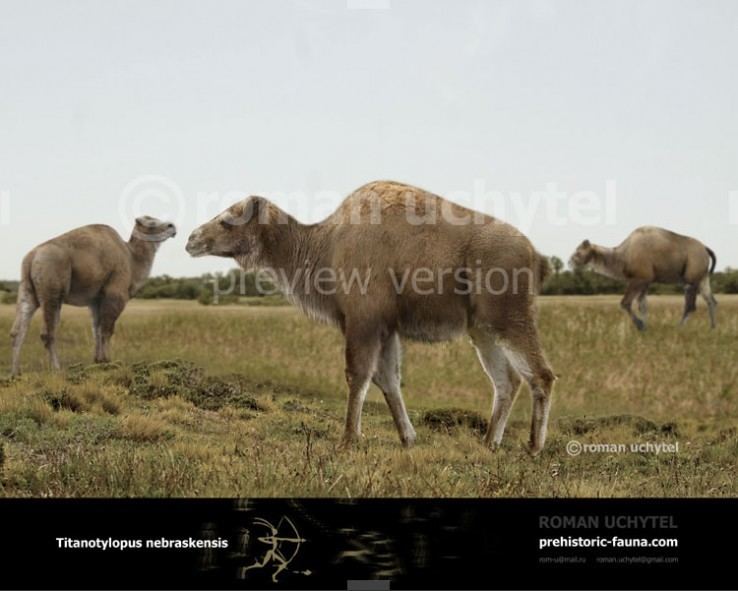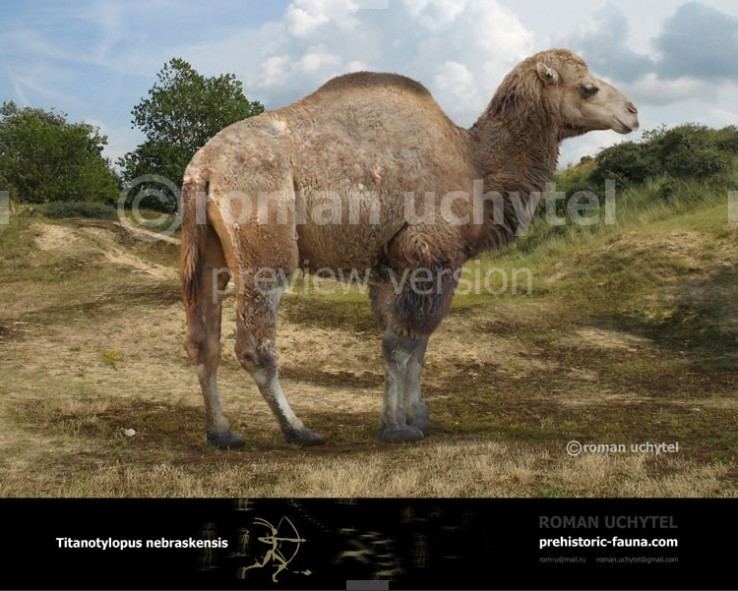Family Camelidae Phylum Chordata Order Even-toed ungulate | Rank Genus | |
 | ||
Similar Gigantocamelus, Aepycamelus, Camelops, Megacamelus, Even‑toed ungulate | ||
titanotylopus nebraskensis 1
Titanotylopus is an extinct genus of terrestrial herbivore the family Camelidae, endemic to North America from the Miocene through Pleistocene 10.3 mya—300,000 years ago, existing for approximately 10 million years.
Contents
- titanotylopus nebraskensis 1
- titanotylopus nebraskensis 2
- Paleobiology
- Appearance
- Alternate classification
- References

Its name is derived from the Greek words Τιτάν, τύλος and πούς — "Titan", "knob" and "foot"; thus, "giant knobby-foot."

titanotylopus nebraskensis 2
Paleobiology

Titanotylopus is distinguished from other early large camelids by its large upper canines and other distinguishing dental characteristics, and absence of lacrimal vacuities in the skull. Unlike the smaller, contemporaneous Camelops, Titanotylopus had relatively broad second phalanges, suggesting that it had true padded "cameltoes," like modern camels.

The species Titanotylopus spatulus was characterized by broad, spatula-like incisors. It has been found at Grand View, Red Light, Hudspeth County, Texas, Donnelly Ranch, White Rock, Kansas, Mullen II (Kansas), Sandahl Local Fauna (Nebraska), Vallecito Creek, Colorado and 111 Ranch, Arizona in North America.
Appearance
Titanotylopus possessed long and massive limbs, a comparatively small braincase, and a convex slope between the eyes. Its average height was 3.5 m (11.5 ft).
Like modern camels, it possessed a hump for fat storage; evidence for this is provided by the long neural spines on its thoracic vertebrae.
Alternate classification
While some authors have considered Gigantocamelus and Titanotylopus to be congeneric, others have maintained them separately. Voorhies and Corner, based on previously unreported material, documented that the two are indeed worthy of separate generic status. Harrison (1985) followed Voorhies and Corner in advocating the use of Titanotylopus for only T. nebraskensis, based on a lower jaw, and Gigantocamelus for G. spatula, which includes G. fricki. There is a clear difference between the proximal phalanx of specimens assigned to Gigantocamelus and to Titanotylopus, based on skeletons associated with skull material.
